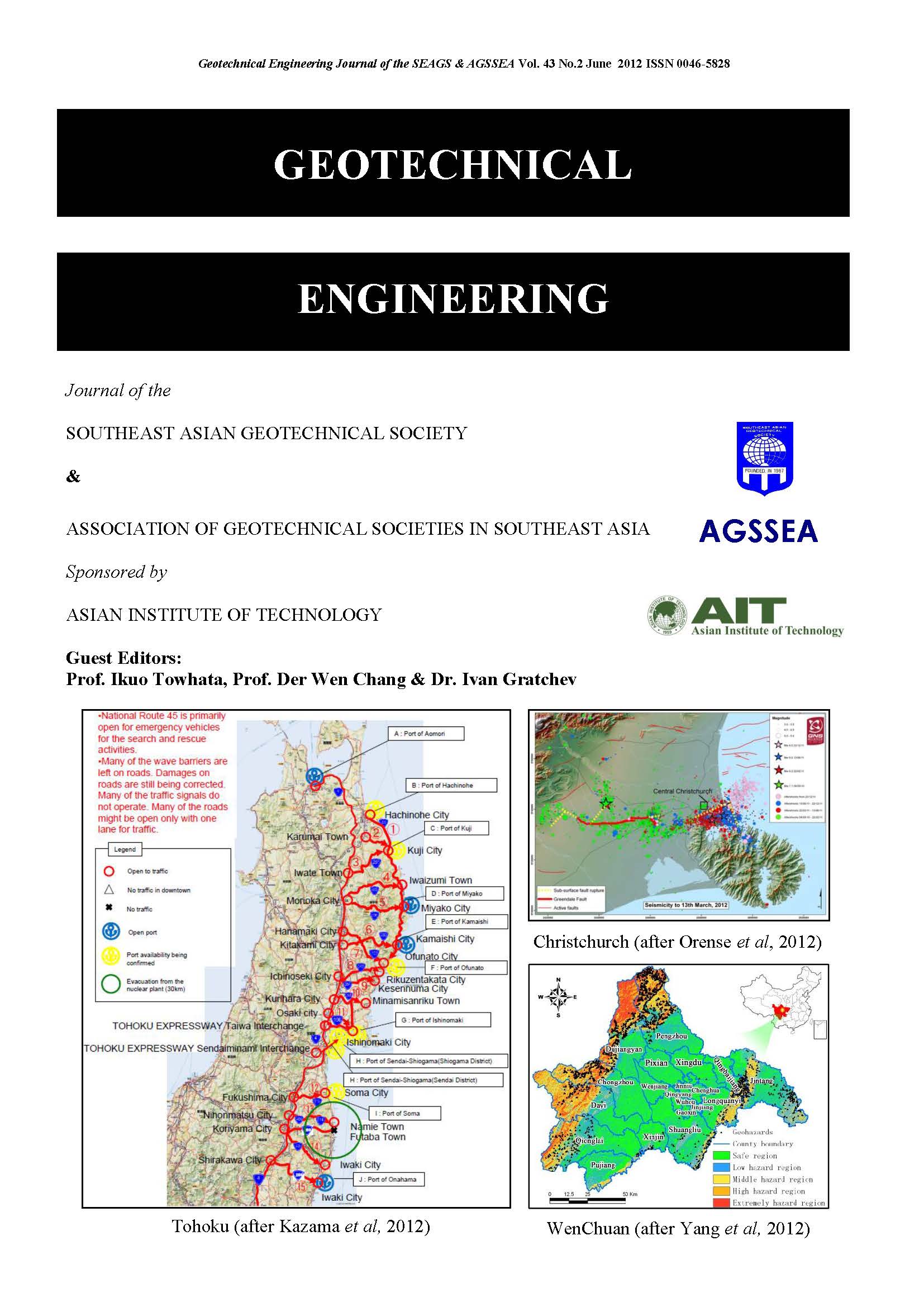Analysis of Soil Liquefaction during the Recent Canterbury (New Zealand) Earthquakes
Main Article Content
Abstract
Four successive large-scale earthquakes, with moment magnitudes (M w) ranging from 5.9 to 7.1, struck the Canterbury region on the South Island of New Zealand within a period of 15 months in 2010-2011. These earthquakes caused extensive damage to lifelines and residential houses in Christchurch City and adjacent areas due to widespread liquefaction and re-liquefaction in areas close to major streams, rivers and wetlands. In this paper, various analyses were made considering the results of the reconnaissance work conducted immediately after the events, the acceleration records at strong motion sites and the available boring information. The liquefaction risk in the city was evaluated to explain the severity and extent of damage during the 2010 and 2011 events. Finally, simulation of recorded ground motions through 1D effective stress ground response analysis gave a better understanding of the dynamic properties of Christchurch soils.
Article Details

This work is licensed under a Creative Commons Attribution-NonCommercial-NoDerivatives 4.0 International License.
Copyright © 2019 Association of Geotechnical Societies in Southeast Asia (AGSSEA) - Southeast Asian Geotechnical Society (SEAGS).


